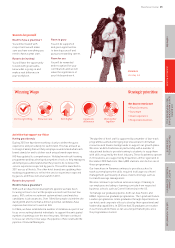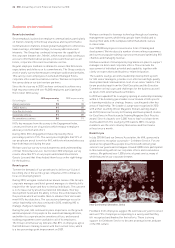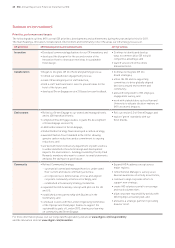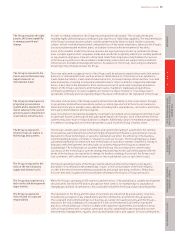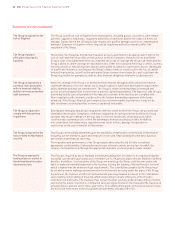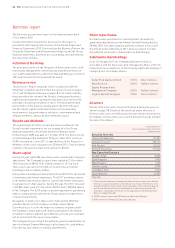Holiday Inn 2010 Annual Report Download - page 33
Download and view the complete annual report
Please find page 33 of the 2010 Holiday Inn annual report below. You can navigate through the pages in the report by either clicking on the pages listed below, or by using the keyword search tool below to find specific information within the annual report.
Business review 31
OVERVIEW BUSINESS REVIEW
THE BOARD,
SENIOR MANAGEMENT AND
THEIR RESPONSIBILITIES
GROUP FINANCIAL
STATEMENTS
PARENT COMPANY
FINANCIAL STATEMENTS USEFUL INFORMATION
Risk management
As a business, IHG manages and takes risks every day. However,
we recognise that by managing risks effectively, particularly
the major risks that may affect our business plans and strategic
objectives, we are able to protect or enhance our key assets
appropriately. Amongst our key assets, we have:
• brands and market position;
• financial strength and performance;
• business capability and systems including people, IT systems
and ways of working; and
• business reputation and relationships with our stakeholders.
Accordingly, we have established a risk management framework
applied to IHG’s Business and Hotel Safety risks. The aim in 2011
is to embed and mature this approach to risk management
even further.
Business risk management
Capability, process and framework
In 2010, the Group improved its risk management capability across
the business by fine-tuning the process and focusing on emerging
risks. For all key risks, existing controls were identified and
assessed as well as the ability, benefit and cost to improve them.
The work is documented in ‘heat maps’ and risk action plans which
support the risks.
The process for identifying and managing key risks to IHG begins
with risk assessments involving a wide range of stakeholder inputs.
These result in risk profiles and actions for all regions and
functions, which are monitored and reported regularly by senior
leadership teams.
The region and function risks are consolidated, refined and
calibrated with a strategic view of risks at the Risk Working Group
chaired by the Company Secretary and comprising the heads of
IHG’s strategy, risk management and internal audit functions.
The resultant set of risks and action plans are discussed and
further refined at the Executive Committee and finally considered
and agreed by the Board. The Audit Committee focuses on the
robustness of the risk management process and the effectiveness
of actions in managing these risks. This may include calling on risk
owners to report on progress in managing key risks and actions.
At each stage of the process communications are two way,
facilitated by the Risk Management department and nominated
risk coordinators embedded in the business.
This process is referred to as the Major Risk Review, the key
elements of which are represented in the diagram below:
Working together to manage corporate risk
The development of IHG’s risk management culture and capability
is a collaborative effort led by the Company Secretary. IHG’s vision
for risk management is to foster a culture that becomes instinctive,
well-informed, curious, alert, responsive, consistent and
accountable.
Risk management activity permeates the whole Group and
is embedded in our business processes. For example, risk
management is included in the strategic review process between
the Chief Executive and individual Executive Committee members
twice a year. This ‘tone from the top’ support for risk management
is cascaded into the business.
In addition, the strategy, risk management, internal audit and legal
and regulatory compliance teams are all represented at the Risk
Working Group to align activities, leverage skills and relationships
and provide consistent key messages to the Executive Committee
and the Board.
Strategy:
The strategy function provides a strong link to forward-looking
value creation opportunities and asset protection requirements
of the business.
Risk Management:
The risk management function focuses on driving action to support
the strategy and protect assets by building a risk-aware and
proactive culture and capability amongst management, focusing
on risks prioritised by the business leaders.
EXECUTIVE COMMITTEE
BOARD/AUDIT COMMITTEE
RISK WORKING GROUP
MAJOR RISK REVIEW
REGION AND FUNCTION RISKS
GROUP LEVEL RISKS






